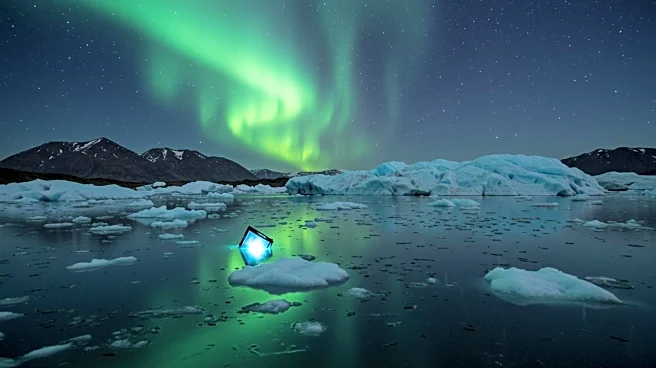What is the story about?
What's Happening?
Researchers have discovered that a massive flood in Greenland in 2014 was caused by meltwater breaking through an ice sheet, releasing over 24 billion gallons of water. This event, previously undetected, was revealed in a study published by Nature Geoscience. The flood challenged existing assumptions about meltwater flow, showing that water can move in unexpected directions beneath ice sheets. The study was led by Jade Bowling from Lancaster University, who initially doubted the data due to its unexpected nature.
Why It's Important?
The discovery highlights gaps in understanding Greenland's ice sheet dynamics, which are crucial for predicting future sea level rise and climate change impacts. Greenland's ice sheet is the second largest in the world, and its rapid melting due to human-induced climate change poses significant risks to global sea levels and weather patterns. The study emphasizes the need for improved models and understanding of subglacial hydrology to better predict and mitigate climate-related changes.
What's Next?
The findings may lead to increased research efforts focused on Greenland's ice sheet and its hydrological systems. Scientists may develop new models to predict meltwater behavior and its impact on ice sheet stability. The study could also influence policy discussions on climate change mitigation and adaptation strategies, emphasizing the urgency of reducing greenhouse gas emissions.
Beyond the Headlines
The event underscores the interconnectedness of global climate systems and the far-reaching impacts of local environmental changes. It raises awareness about the importance of international cooperation in climate research and the need for comprehensive strategies to address climate change.
AI Generated Content
Do you find this article useful?













